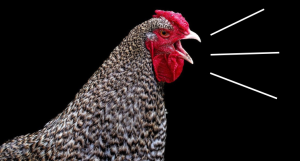1. One thing that helps
3-D printing seems a perfect solution for people waiting for organ replacements. In a world first, doctors in Korea performed the first transplant of a 3D-printed windpipe. The windpipe is made from discarded nasal stem cells and cartilage cells. A biodegradable polyester is used and infused with bio-ink to carry the living cells for structural support. Astounding.
Less than two weeks are needed to print the windpipe and it takes just half-a-day to implant. After six months, the 3D-printed windpipe begins forming its own blood vessels!
While this transplant expires after around 5 years, this breakthrough hopes to lead the way to more 3D-printed organs and to save many lives in the process.
2. One to be wary of
Surprise, surprise! AI is being used in academic journals. Would you be surprised to see this image in a peer-reviewed paper?

If it’s not yet obvious, the rat’s penis is around double its body size. Look at the labels and you’ll find words like, “Dissilced”, “senctollc stem cells” and “dck”. It did properly identify the animal as a “Rat” though, so thumbs up there. This illustration was created by Midjourney, a generative AI that can produce images. But the real question is, “How did it get there?”
The peer-reviewed paper, “Cellular functions of spermatogonial stem cells in relation to JAK/STAT signaling pathway”, was published in the journal “Frontiers in Cell Development and Biology”. And although it has this ridiculous image, Jingbo Dai, a US-based reviewer said, “As a biomedical researcher, I only review the paper based on its scientific aspects. For the AI-generated figures, since the author cited Midjourney, it’s the publisher’s responsibility to make the decision.” Way to pass the buck! Did he not think it was worth a mention?
If such obviously incorrect AI-generated images can be published in a peer-reviewed paper, what other mistakes are out there in the world and what impact may they be having?
3. One to amaze

Dr Doolittle is here! Do you want to talk to a chicken?
A team from Dalhousie University is using AI to decode the language of chickens. Every cluck, every coo and every purr has different meanings and can signify different emotional states. AI and machine learning systems are then trained to recognize patterns in chicken language and understand what they mean
The research aims to unlock the secrets of the chicken language (seriously!) to help us make better-informed decisions when taking care of them. This can lead to better farming practices creating healthier and happier chickens, hopefully making tastier eggs (and chicken burgers 🤫).
The first thing I’m going to ask the chicken? Why did it cross the road?